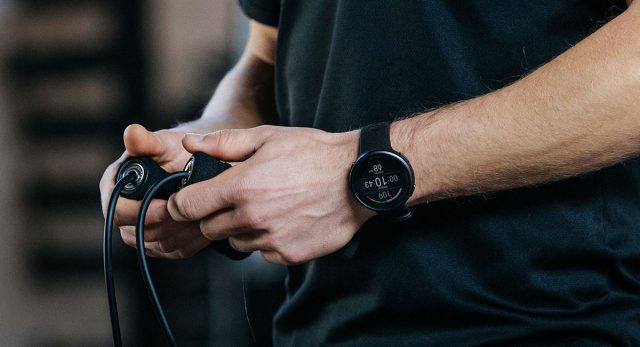Monitoring running heart rate and heart rate based training is the way to go for many runners – from aspiring 5K finishers to data-obsessed track athletes and trail-loving ultramarathoners.
With the right tools (like literally any Polar product), you can measure your running heart rate and the heart rate zones you should – and want – to be training in. And while it seems easy enough to understand, heart rate training is actually a little more complicated than just aiming to get your heart pumping at a certain rate.
So, what actually matters and what doesn’t when it comes to running heart rate? Let’s break it down.
understand what you’re really training when running at different speeds
“There are specific energy systems in the body that are used when training at different intensities,” says Jason Lakritz, PT, DPT, physical therapist at Finish Line Physical Therapy in New York City and founder of Profunctional Running.
Generally, these systems can be broken down into three categories:
The aerobic system
The aerobic system (50–70% of your maximum heart rate) uses fat to create energy. It’s a slow system, but it doesn’t create lactic acid, so you can stay there for a long time. “This is the system you’re using during your easy runs,” Lakritz says.
The lactic threshold system
The lactic threshold system (70–80% of your max heart rate) is a combination of the aerobic and anaerobic systems and uses a combination of fat and carbohydrates to create energy. When training using this system, the body needs energy faster, so it uses carbs,” Lakritz explains. “The way the body uses carbs to create energy is much faster. The problem is that when the body uses carbs to create energy, it causes a byproduct called lactic acid to form.” In the lactic threshold system, the body can clear this byproduct as fast as it’s made – think tempo running.
The anaerobic system
The anaerobic system (80–95% of your max) uses mostly carbs. This is high-intensity running, so energy is needed quickly. “The body uses carbs so fast it can’t clear lactic acid fast enough, and the body goes fast, but only for short periods before it needs to slow down to clear the lactic acid,” Lakritz says. “This is used for speed training, such as interval running.”
Generally during a run, you’re in one of those three zones, but these systems are more of a continuum than they are specific categories. “As you run faster and faster, the amount of fat to carbs you use for energy will gradually change as you move through each category,” Lakritz says. “This is a simplified version of how the body uses energy.”
So, how does YOUR RUNNING heart rate come into play?
“You can assign a heart rate to each of these systems,” says Lakritz. “Most heart rate training programs work within five zones, but you can simplify it to three.”
Your maximum heart rate can loosely be estimated by subtracting your age from 220.
Generally, Lakritz says, working at 50–70% of your heart rate maximum is considered aerobic training, 70–80% is considered lactic threshold training, and 80–95% is considered anaerobic training. “Your maximum heart rate can loosely be estimated by subtracting your age from 220,” he says. “This is a very crude estimation, and generally your max heart rate will go down as you age.”
To put this into play, consider a common workout like 6x400m repeats.
First, determine the goal of the workout – say, to run the 400s at 10K pace or half marathon pace.
“This would be considered running in the lactic threshold system,” Lakritz explains. “Your running heart rate should get into and stay in the 70–80% range. If your heart rate doesn’t reach this percentage of your heart rate max, you’re training more of your aerobic system, and if your heart rate goes above this range, you’re training more of the anaerobic system.”
You want to take enough rest between each 400 to allow you to stay within that 70–80% zone, which will vary depending on the person.
The better trained an athlete is at running at their lactic threshold heart rate, the less rest they’ll need.
“The better trained an athlete is at running at their lactic threshold heart rate, the less rest they’ll need.” If you decide the goal of the workout is to train the anaerobic system, you’ll want to get your running heart rate up to 80–95%. “This will require more rest if you want to keep the pace of each interval the same,” Lakritz says.
What if I don’t have a heart rate monitor?
If you’re running data-free, you can use other physical markers to estimate which system you’re training. “I like using the ‘talking test,’” Lakritz says.
“If you can talk in full sentences, you’re probably in the aerobic zone. If you can say four or five words at a time, you’re probably in the lactic threshold zone. If you can only say one or two words at a time, you’re probably in the anaerobic zone.”
While there’s no scientific basis behind this method, it’s a solid rule of thumb if your monitor is charging or your dog hid it somewhere you’ve yet to discover.
In the spotlight

Jason Lakritz
If you liked this post, don’t forget to share so that others can find it, too.
Or give it a thumbs up!
I like this article
Please note that the information provided in the Polar Blog articles cannot replace individual advice from health professionals. Please consult your physician before starting a new fitness program.





